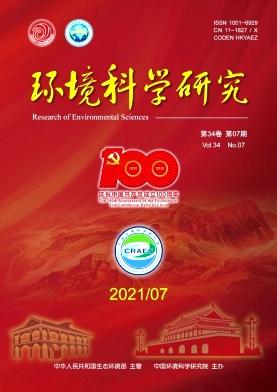Environmental Effect of Free Trade between China and ASEAN and Impact Analysis of Key Socio-Economic Factors
Q2 Environmental Science
引用次数: 1
Abstract
In order to identify and quantify the environmental effects of international trade and promote the construction of the Green Belt and Road,we calculated the environmental costs of the trade between China and ASEAN based on the input-output model of environmental economics,trade and pollutant emission intensity data from China-ASEAN yearbook,China statistical yearbook,World Bank and ASEAN yearbook.Moreover,we also identified the impact of socio-economic trade factors on environmental costs through redundancy analysis(RDA).The results showed that:(1)In 2010,the trade between China and ASEAN resulted in a pollution deficit in the discharge of industrial waste gas,fumes,sulfur dioxide,and solid waste,which decreased by 3600×10^8 m 3,3.8×10^4 t,19.7×10^4 t,9.8×10^4 t,respectively.However,there was a surplus in the discharge of industrial wastewater and dust,which was 5400×10^4 and 1.1×10^4 t,respectively.(2)The environmental effect of trade in heavily polluting industries was positive for China and the manufactured goods were the largest contributors.However,most severe environmental costs appeared in the trade in moderately polluting industries,and moderately environmental costs were observed in trade related to lightly polluting industries.(3)China′s trade with the low-income countries in ASEAN had negative effects on environment protection in China;on the contrary,trade with the middle-and high-income countries was beneficial to China′s environment.(3)The main factor affecting the environmental cost of China′s import trade was the urbanization rate and the share of industrial output value in GDP,and China′s export trade was export volume.It was suggested that China imported industrial products with large environmental costs from the developed countries in ASEAN,while exported a large number of primary industrial products to underdeveloped countries.This research shows that China should strengthen technological innovation and improve pollution emission standards,reduce the intensity of pollution emissions in heavily polluting industries,and optimize export structure to avoid becoming a‘pollution haven’.中国与东盟自由贸易的环境效应及关键社会经济因素影响分析
为了识别和量化国际贸易的环境影响,促进“一带一路”建设,我们基于《中国-东盟年鉴》、《中国统计年鉴》、,世界银行和东盟年鉴。此外,我们还通过冗余分析(RDA)确定了社会经济贸易因素对环境成本的影响,工业废水和粉尘的排放有盈余,分别为5400×10^4和1.1×10^4t。(2) 重污染行业贸易对中国的环境影响是积极的,制成品是最大的贡献者。然而,最严重的环境成本出现在中等污染行业的贸易中,而中等环境成本则出现在与轻度污染行业相关的贸易中。(3) 中国和东盟低收入国家的贸易对中国的环境保护产生了负面影响;相反,与中高收入国家的贸易有利于中国的环境。(3) 影响中国进口贸易环境成本的主要因素是城镇化率和工业产值在GDP中的份额,而中国出口贸易是出口额。有人认为,中国从东盟发达国家进口环境成本较高的工业产品,同时向欠发达国家出口大量初级工业产品。研究表明,中国应加强技术创新,提高污染排放标准,降低重污染行业的污染排放强度,优化出口结构,避免成为“污染天堂”。
本文章由计算机程序翻译,如有差异,请以英文原文为准。
求助全文
约1分钟内获得全文
求助全文
来源期刊

环境科学研究
Environmental Science-Environmental Science (miscellaneous)
CiteScore
3.80
自引率
0.00%
发文量
6496
期刊介绍:
 求助内容:
求助内容: 应助结果提醒方式:
应助结果提醒方式:


